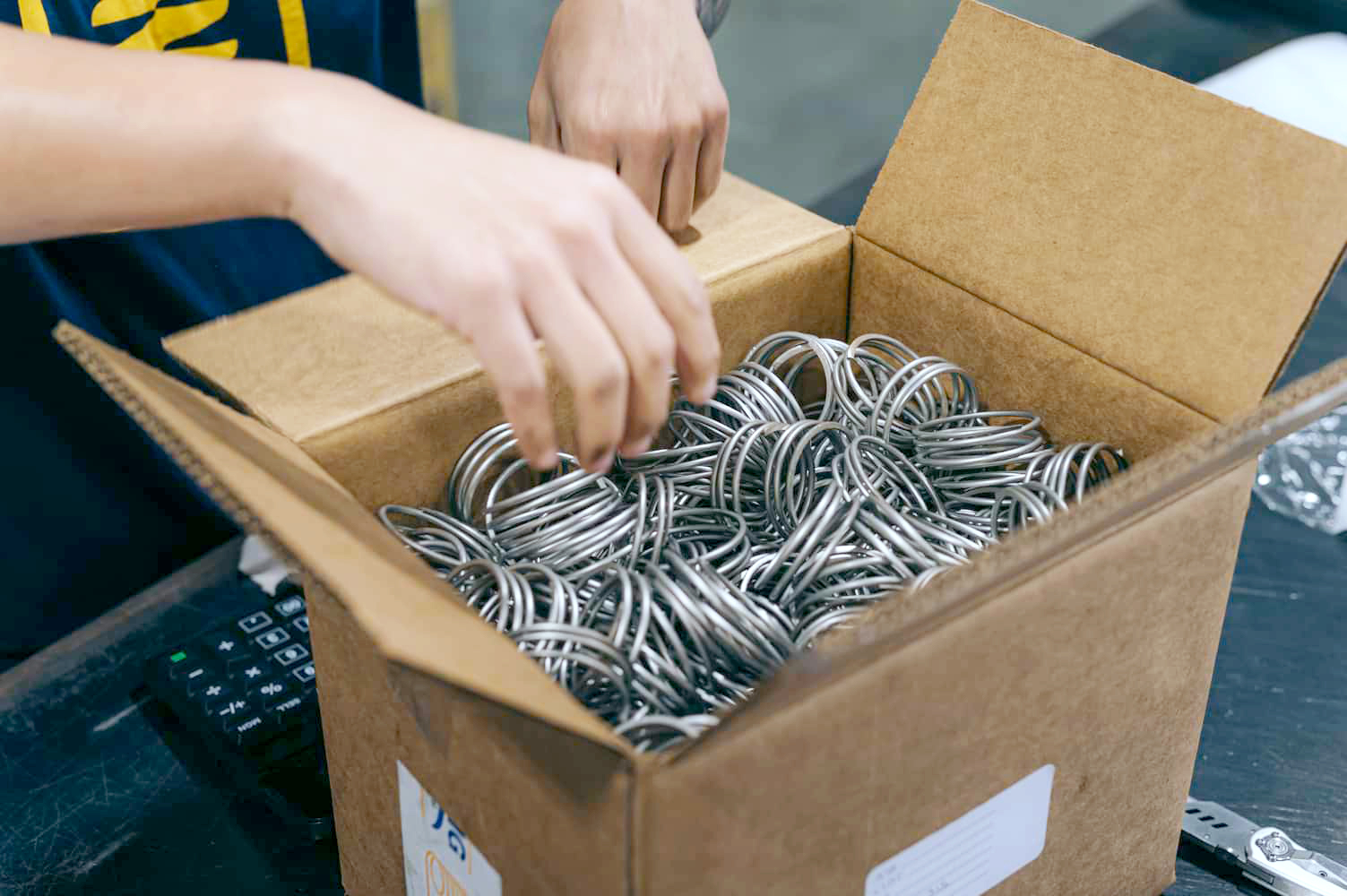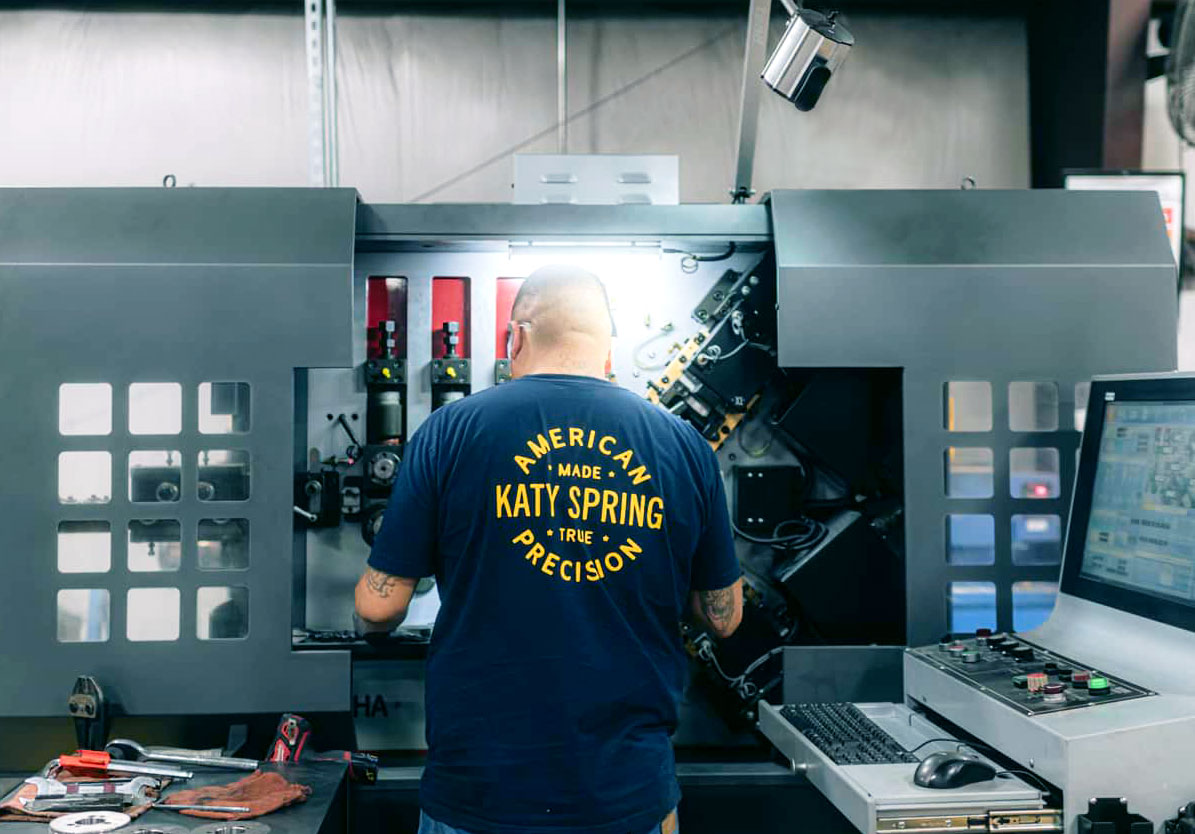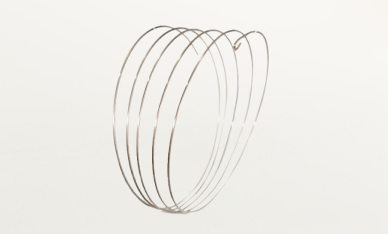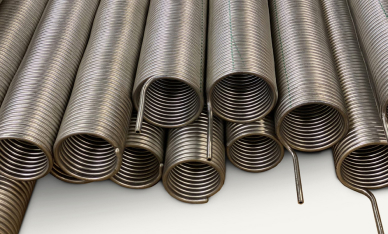Start your custom quote:
custom barrel springs by katy spring
Types of extension springs
Key Characteristics
Shape and Design: Extension springs are tightly coiled and usually have hooks, loops, or end coils at both ends. These ends attach to different components, providing a mechanism to exert force when the spring is pulled apart.
Material: These springs are typically made from high-tensile materials like stainless steel, music wire, or other durable alloys. This ensures they can withstand repeated stretching and return to their original shape without significant wear or deformation.
Load and Deflection: Extension springs are characterized by their load (the force required to extend the spring) and deflection (the distance the spring can be stretched). The spring’s design determines its load capacity and deflection range.
Advantages of Using Extension Springs
Energy Storage: Extension springs efficiently store mechanical energy when extended, releasing it to return to their original position. This makes them ideal for applications requiring tension and recoil.
Durability: Made from robust materials, extension springs are resistant to fatigue, wear, and environmental factors, ensuring a long service life even under repeated use.
Versatility: With various sizes, materials, and end configurations available, extension springs can be tailored to fit a wide range of applications, from small precision devices to large industrial machinery.
Custom springs, From Concept to Completion
From the initial spring design to the manufacturing and delivery. Our best practices and quality assurance ensure you end up with the precise parts made just for your project. Every solution, designed for your needs.
- 1
- Spring Design

We’ll work closely with your team to design a custom spring solution. Already have a design? We’ll be able to jump through this step even faster.
- 2
- Custom Manufacturing

For over 25 years, we’ve produced a large array of custom springs in a variety of materials. It’s our speciality.
- 3
- QC & Delivery

Each and every step of our production process ensures trackable quality so your product is more than what you expect.
need custom springs manufactured?
What our customers say

“ Definitively I will Katy Spring in our preferred list of spring supplier, excellence and fast quoting service.”

-
Héctor G.
Precision Tools

“ Spot on. Let me get in touch with our customer to see how they want to proceed. Thank you for the quick...”

-
Joe H.
Oil Rig Design Engineer

“ I have at least three more good volume items to quote. I will get those over to you. Your pricing has been...”

-
Marsha R
Engineered Valves
quality is our guarantee
manufacturing quality since ‘99
At Katy Spring, we take the little things seriously. From the design and engineering quality to the way you feel through the entire process, we want to be your best manufacturer across the board. That’s how we do business.


Detailed Quoting & Estimates
Once Katy Spring receives your files and specifications we will begin working on your custom quote.
Thorough Quality Control Checks
Once Katy Spring receives your files and specifications we will begin working on your custom quote.
Trackable Schedules & Deliveries
Once Katy Spring receives your files and specifications we will begin working on your custom quote.
24/7 Production Support
Once Katy Spring receives your files and specifications we will begin working on your custom quote.
Best Practices for Custom Spring Orders
- The normal squareness tolerance for ground ends is 2-3 degrees.|
- Use conical compression springs when a short, solid height is needed to reduce buckling and surging.
- Leave the wind direction optional for compression springs. Use right-hand wound when the compression spring is being threaded on a bolt, or one right and one left when two springs are being used inside the other to avoid meshing coils.
- Make Katy Spring aware of the spring travel and any solid height requirements
- Specify a force with a tolerance (+/- 10 percent) at an exact compressed height rather than a definite deflection. Spring rate is the difference of two forces divided by the amount of deflection between those forces.
- Make Katy Spring aware of unusual conditions such as temperature, corrosive environments, impact force, and fatigue life.
- Specify the mandatory requirements only to Katy Spring, and leave the exact wire size and number of coils to the discretion of Katy Spring whenever possible.
other custom springs:
Need a quote? It’s quick and easy, start here:
©2024 All rights reserved. Site by AC








